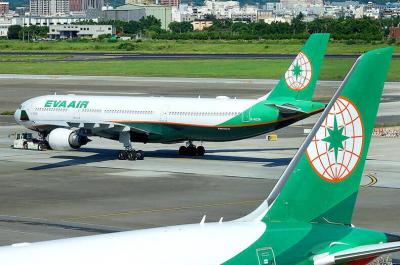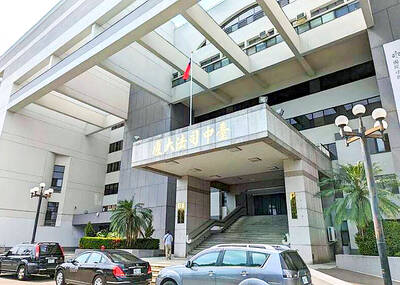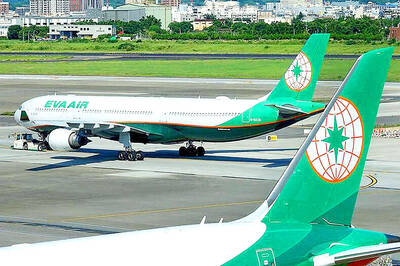Taiwanese tourists traveling to Japan from next year could undergo Japanese immigration and customs screening processes before leaving Taiwan Taoyuan International Airport, a report published in the Nikkei Asian Review said yesterday.
The preclearance program, which applies to tourists visiting Japan from Taiwan or South Korea, could be in place by the middle of next year, the report said.
According to the report, the Japanese government had a similar program for Taiwanese and South Korean tourists between May 2005 and September 2009. It canceled the program in October 2009 by requiring visitors in the program to provide photographs and fingerprints upon arrival.
However, the Japanese government is seeking to reintroduce the program because it is working to raise the number of international travelers to 40 million by 2020, up from 19.74 million last year, the report said.
Easing airport congestion would be one of Tokyo’s main challenges in the years to come, the report said, adding that foreign visitors at Kansai International Airport have reportedly waited as long as 84 minutes for immigration screening.
The preclearance program is applicable to tourists from South Korea or Taiwan because they accounted for one-third of all international visitors to Japan last year, the report said, citing data from the Japan Tourism Agency.
Taiwanese visitors using the preclearance program would have photographs and fingerprints examined by Japanese immigration officers stationed in Taiwan, the report said.
After they arrive in Japan, they could skip the screening procedures they had already completed in Taiwan and leave the airport quickly through a special lane at customs.
Taoyuan International Airport Corp (TIAC) senior vice president Wen Yung-sung (溫永松) said the airport company is still waiting further instruction from the Ministry of Transportation and Communications, which must first seek approval from the Executive Yuan before the program can be initiated.
Neither the ministry nor the Executive Yuan have given any policy instruction at this point, he said.
Wen said the company would need to consider if the terminals at the Taoyuan airport have enough space to set up facilities for the Japanese immigration and customs officials. It must also consider if such facilities would hinder the traffic of passengers inside the terminals, he said.
“We lack the space to accommodate additional facilities inside the terminals, so we need to conduct a comprehensive assessment concerning the program,” Wen said.
Statistics from the Civil Aeronautics Administration showed Taoyuan airport has about 600 flights to Japan each week, including flights to Tokyo, Nagoya, Hakodate, Sapporo, Fukuoka, Hiroshima and other cities in Japan.

EVA Airways today confirmed the death of a flight attendant on Saturday upon their return to Taiwan and said an internal investigation has been launched, as criticism mounted over a social media post accusing the airline of failing to offer sufficient employee protections. According to the post, the flight attendant complained of feeling sick on board a flight, but was unable to take sick leave or access medical care. The crew member allegedly did not receive assistance from the chief purser, who failed to heed their requests for medical attention or call an ambulance once the flight landed, the post said. As sick

A drunk woman was sexually assaulted inside a crowded concourse of Taipei Railway Station on Thursday last week before a foreign tourist notified police, leading to calls for better education on bystander intervention and review of security infrastructure. The man, surnamed Chiu (邱), was taken into custody on charges of sexual assault, taking advantage of the woman’s condition and public indecency. Police discovered that Chiu was a fugitive with prior convictions for vehicle theft. He has been taken into custody and is to complete his unserved six-month sentence, police said. On Thursday last week, Chiu was seen wearing a white

The Taichung District Court yesterday confirmed its final ruling that the marriage between teenage heir Lai (賴) and a man surnamed Hsia (夏) was legally invalid, preventing Hsia from inheriting Lai’s NT$500 million (US$16.37 million) estate. The court confirmed that Hsia chose not to appeal the civil judgement after the court handed down its ruling in June, making the decision final. In the June ruling, the court said that Lai, 18, and Hsia, 26, showed “no mutual admiration before the marriage” and that their interactions were “distant and unfamiliar.” The judge concluded that the couple lacked the “true intention of

EVA Airways, one of the leading international carriers in Taiwan, yesterday said that it was investigating reports that a cabin crew manager had ignored the condition of a sick flight attendant, who died on Saturday. The airline made the statement in response to a post circulating on social media that said that the flight attendant on an outbound flight was feeling sick and notified the cabin crew manager. Although the flight attendant grew increasingly ill on the return flight, the manager did not contact Medlink — a system that connects the aircraft to doctors on the ground for treatment advice during medical